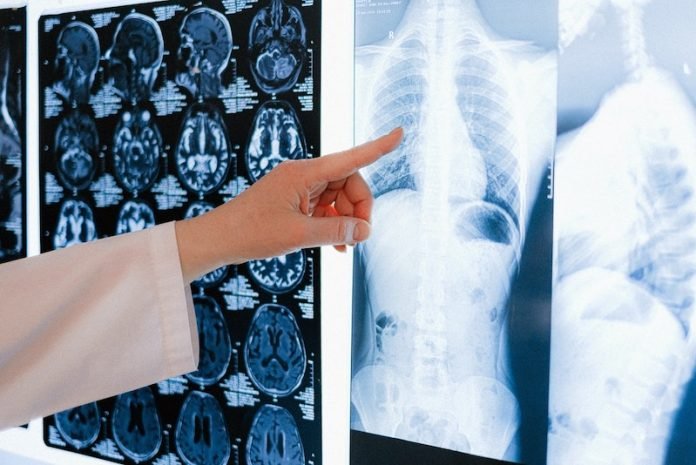
Lung cancer includes two main types: non-small cell lung cancer and small cell lung cancer.
Smoking causes most lung cancers, but nonsmokers can also develop lung cancer.
Cigarette, cigar, and pipe smoking
Tobacco smoking is the most important risk factor for lung cancer. Cigarette, cigar, and pipe smoking all increase the risk of lung cancer.
Tobacco smoking causes about 9 out of 10 cases of lung cancer in men and about 8 out of 10 cases of lung cancer in women.
Studies have shown that smoking low tar or low nicotine cigarettes does not lower the risk of lung cancer.
Studies also show that the risk of lung cancer from smoking cigarettes increases with the number of cigarettes smoked per day and the number of years smoked.
People who smoke have about 20 times the risk of lung cancer compared to those who do not smoke.
Secondhand smoke
Being exposed to secondhand tobacco smoke is also a risk factor for lung cancer. Secondhand smoke is the smoke that comes from a burning cigarette or other tobacco product, or that is exhaled by smokers.
People who inhale secondhand smoke are exposed to the same cancer-causing agents as smokers, although in smaller amounts. Inhaling secondhand smoke is called involuntary or passive smoking.
Family history
Having a family history of lung cancer is a risk factor for lung cancer.
People with a relative who has had lung cancer may be twice as likely to have lung cancer as people who do not have a relative who has had lung cancer.
Because cigarette smoking tends to run in families and family members are exposed to secondhand smoke, it is hard to know whether the increased risk of lung cancer is from the family history of lung cancer or from being exposed to cigarette smoke.
HIV infection
Being infected with the human immunodeficiency virus (HIV), the cause of acquired immunodeficiency syndrome (AIDS), is linked with a higher risk of lung cancer.
People infected with HIV may have more than twice the risk of lung cancer than those who are not infected.
Since smoking rates are higher in those infected with HIV than in those not infected, it is not clear whether the increased risk of lung cancer is from HIV infection or from being exposed to cigarette smoke.
Environmental risk factors
Radiation exposure: Being exposed to radiation is a risk factor for lung cancer. Atomic bomb radiation, radiation therapy, imaging tests, and radon are sources of radiation exposure:
Atomic bomb radiation: Being exposed to radiation after an atomic bomb explosion increases the risk of lung cancer.
Radiation therapy: Radiation therapy to the chest may be used to treat certain cancers, including breast cancer and Hodgkin lymphoma.
Radiation therapy uses x-rays, gamma rays, or other types of radiation that may increase the risk of lung cancer.
The higher the dose of radiation received, the higher the risk. The risk of lung cancer following radiation therapy is higher in patients who smoke than in nonsmokers.
Imaging tests: Imaging tests, such as CT scans, expose patients to radiation. Low-dose spiral CT scans expose patients to less radiation than higher dose CT scans.
In lung cancer screening, the use of low-dose spiral CT scans can lessen the harmful effects of radiation.
Radon: Radon is a radioactive gas that comes from the breakdown of uranium in rocks and soil. It seeps up through the ground, and leaks into the air or water supply.
Radon can enter homes through cracks in floors, walls, or the foundation, and levels of radon can build up over time.
Studies show that high levels of radon gas inside the home or workplace increase the number of new cases of lung cancer and the number of deaths caused by lung cancer.
The risk of lung cancer is higher in smokers exposed to radon than in nonsmokers who are exposed to it.
In people who have never smoked, about 26% of deaths caused by lung cancer have been linked to being exposed to radon.
Workplace exposure: Studies show that being exposed to the following substances increases the risk of lung cancer:
Asbestos. Arsenic. Chromium. Nickel. Beryllium. Cadmium. Tar and soot.
These substances can cause lung cancer in people who are exposed to them in the workplace and have never smoked.
As the level of exposure to these substances increases, the risk of lung cancer also increases. The risk of lung cancer is even higher in people who are exposed and also smoke.
Air pollution: Studies show that living in areas with higher levels of air pollution increases the risk of lung cancer.
Beta carotene supplements in heavy smokers
Taking beta carotene supplements (pills) increases the risk of lung cancer, especially in smokers who smoke one or more packs a day. The risk is higher in smokers who have at least one alcoholic drink every day.
Sign up for our newsletter for more information about this topic.
If you care about cancer, please read studies about common drugs for inflammation, diabetes, alcoholism may help kill cancer and findings of statin drugs can starve cancer cells to death.
For more information about cancer treatment and prevention, please see recent studies about these two things are key to surviving cancer and results showing that common Indian fruit may slow down cancer growth.




